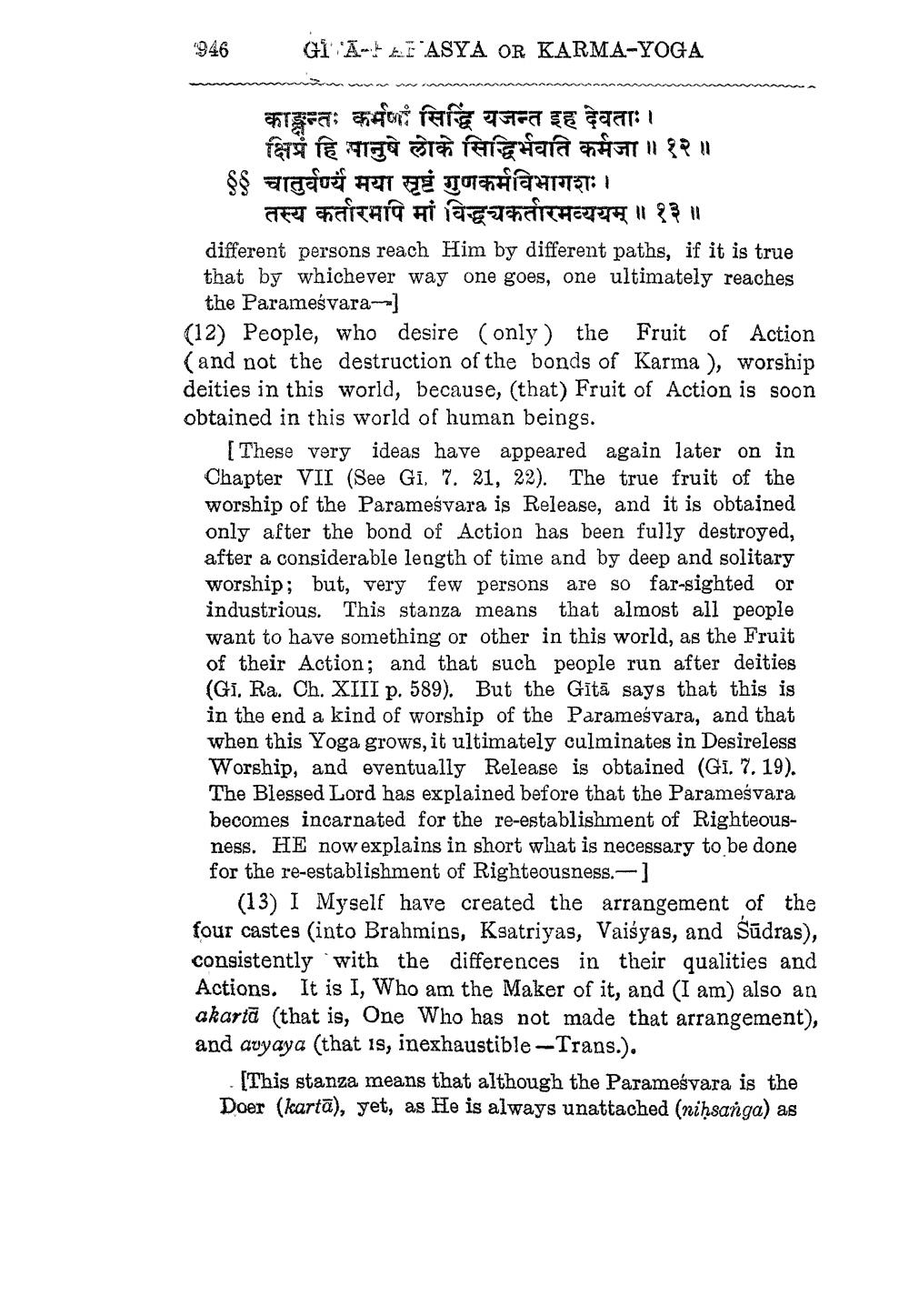________________
946
GI A-LEI ASYA OR KARMA-YOGA
mwa winn कान्तः कर्मणः सिद्धि यजन्त इह देवताः।
क्षिप्रं हि पानुषे लोके सिद्धिर्भवति कर्मजा ॥ १२ ॥ ६६ चातुर्वर्ण्य मया सृष्टं गुणकर्मविभागशः।
तस्य कर्तारमपि मां विद्धयकर्तारमव्ययम् ॥ १३ ॥ different persons reach Him by different paths, if it is true that by whichever way one goes, one ultimately reaches
the Parameśvara (12) People, who desire (only) the Fruit of Action (and not the destruction of the bonds of Karma ), worship deities in this world, because, (that) Fruit of Action is soon obtained in this world of human beings.
[These very ideas have appeared again later on in Chapter VII (See Gi, 7. 21, 22). The true fruit of the worship of the Parameśvara is Release, and it is obtained only after the bond of Action has been fully destroyed, after a considerable length of time and by deep and solitary worship; but, very few persons are so far-sighted or industrious. This stanza means that almost all people want to have something or other in this world, as the Fruit of their Action; and that such people run after deities (Gi, Ra. Ch. XIII p. 589). But the Gītā says that this is in the end a kind of worship of the Parameśvara, and that when this Yoga grows, it ultimately culminates in Desireless Worship, and eventually Release is obtained (Gi. 7. 19). The Blessed Lord has explained before that the Parameśvara becomes incarnated for the re-establishment of Righteousness. HE now explains in short what is necessary to be done for the re-establishment of Righteousness.-1
(13) I Myself have created the arrangement of the four castes (into Brahmins, Ksatriyas, Vaisyas, and Sūdras), consistently with the differences in their qualities and Actions. It is I, Who am the Maker of it, and (I am) also an akartā (that is, One Who has not made that arrangement), and avyaya (that is, inexhaustible - Trans.).
[This stanza means that although the Parameśvara is the Doer (karta), yet, as He is always unattached (nihsanga) as




